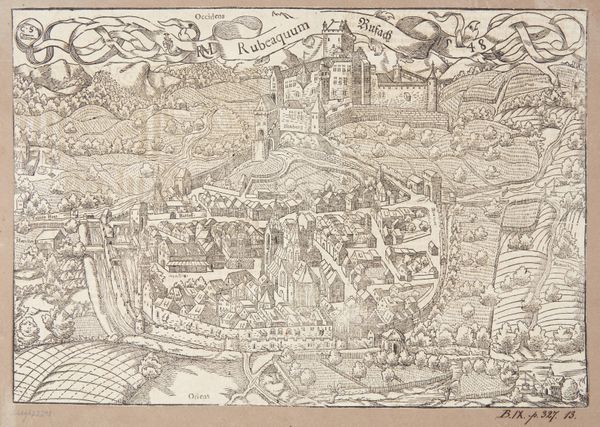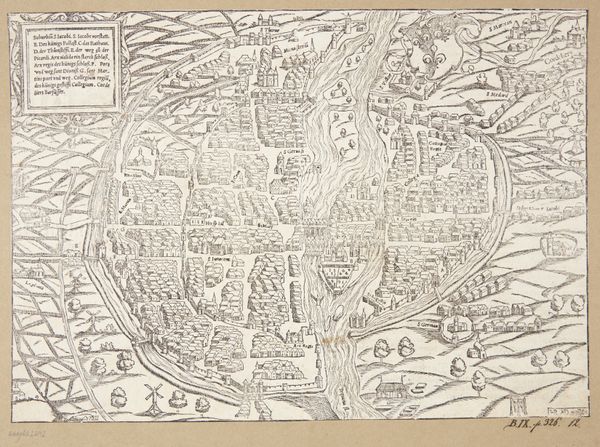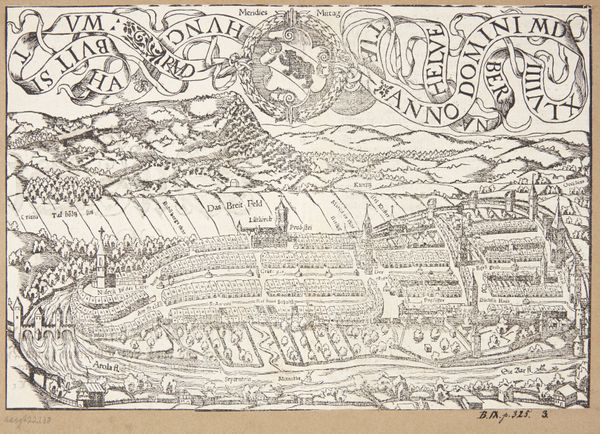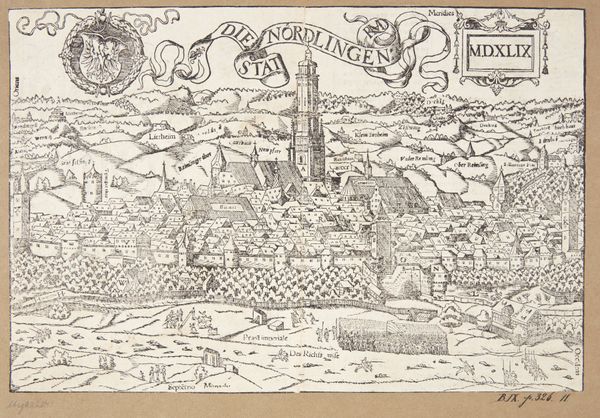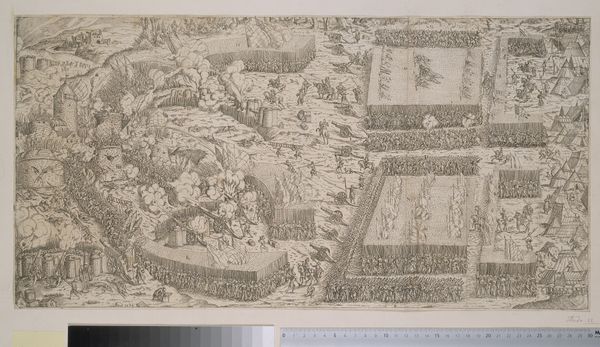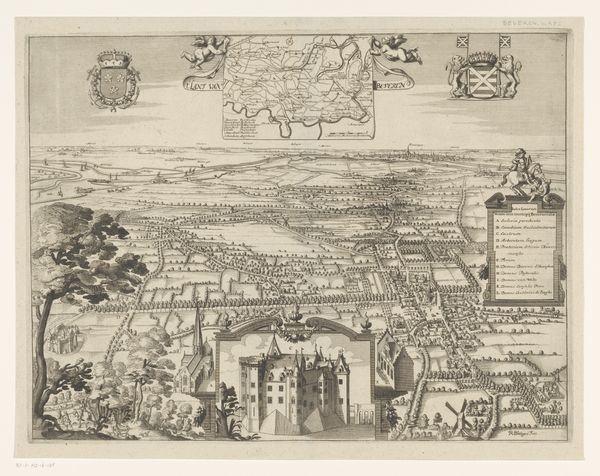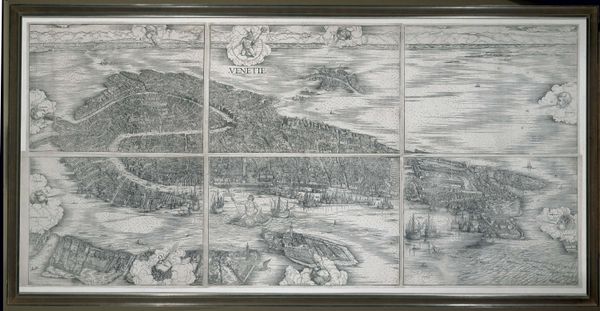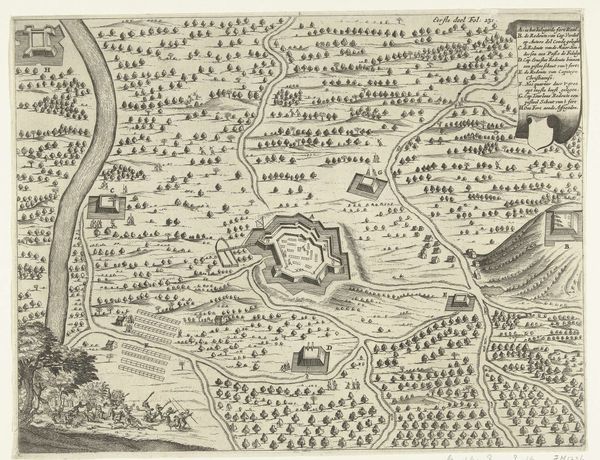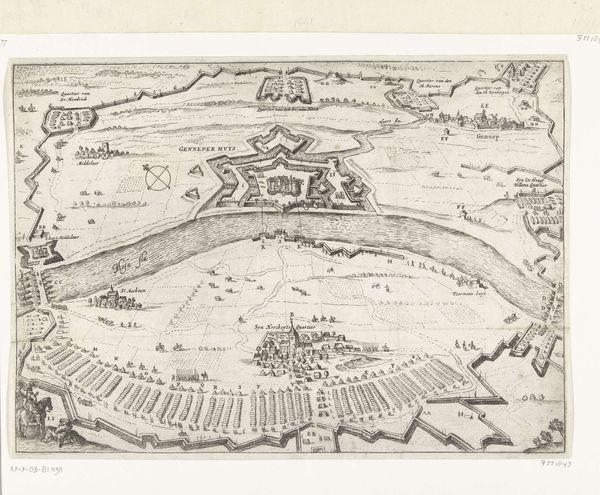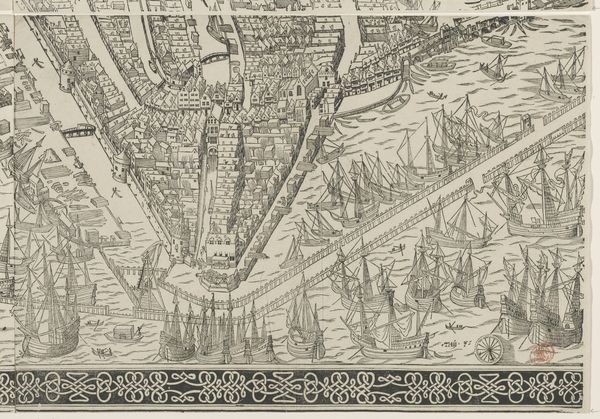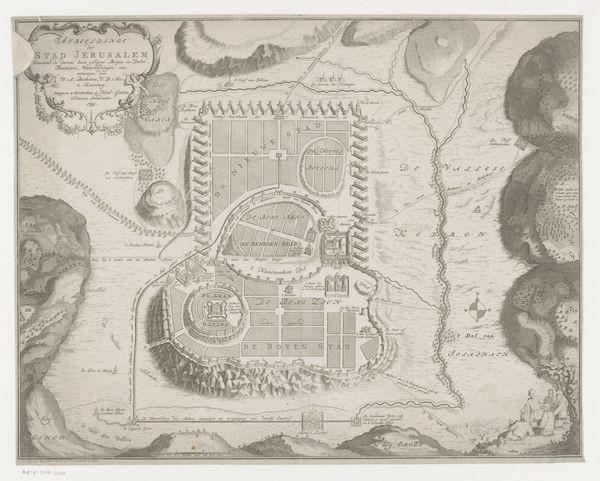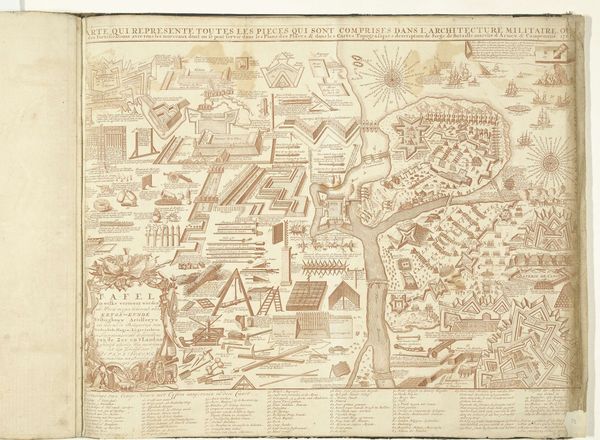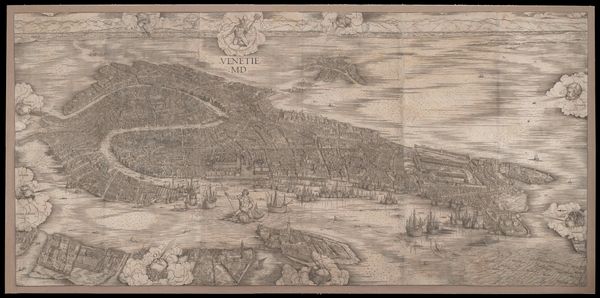
print, woodcut
#
medieval
# print
#
landscape
#
geometric
#
woodcut
#
cityscape
Dimensions: 215 mm (height) x 365 mm (width) (bladmaal)
Curator: This captivating woodcut print, entitled "Kort over Koblenz", dates back to 1549 and comes to us from the hand of Hans Rudolf Manuel Deutsch. Currently residing at the SMK, Statens Museum for Kunst, it presents a bird's-eye view of the city of Koblenz. Editor: My immediate response is a sense of order, despite the intricacy of the scene. The careful lines defining buildings, the river… everything has its place. There's a harmony, an idealized vision presented here. Curator: Indeed. Considering the time, maps like these weren't merely geographical tools. They were political statements. Koblenz, strategically positioned at the confluence of the Rhine and Moselle rivers, held considerable power, reflected here through its depiction. We can read this map through lens of power dynamics, trade, and control during the mid-16th century. Editor: That convergence, those waterways, immediately bring to mind ancient trade routes and cultural exchange. The way the artist emphasizes them… I think of the river as a serpent, a winding symbol of life and movement connecting diverse regions, maybe even different eras. And, if you look, he even labels what look like separate plots of land with individualized and specific trees; symbols of prosperity no doubt. Curator: Absolutely. Notice too how geometric forms give shape to the settlement, creating symbolic boundaries both physical and social. And note the elevated perspective given to us as viewers. A hierarchy is presented which would affect the experience of looking at this artwork at the time as compared to viewing today. Editor: The heraldry at the top center too serves to locate this within a specific lineage and context. Those symbols reinforce established authority but simultaneously, if we recognize them, they connect us to the past. Curator: Which highlights that mapping can reinforce ideologies and solidify existing structures through controlling narratives surrounding geography and cultural narratives. Editor: Thinking about how people interpreted images and the function they perform through history really shapes my perception of our society and where it came from. The imagery on its own already shows that cultural norms have created this symbolic association with both progress, governance and stability. Curator: Exactly, Hans Rudolf Manuel Deutsch offers us both an artistic and political landscape. Editor: Indeed, the layered symbolism makes the historical context incredibly potent, not simply charting physical space but social space too.
Comments
No comments
Be the first to comment and join the conversation on the ultimate creative platform.
